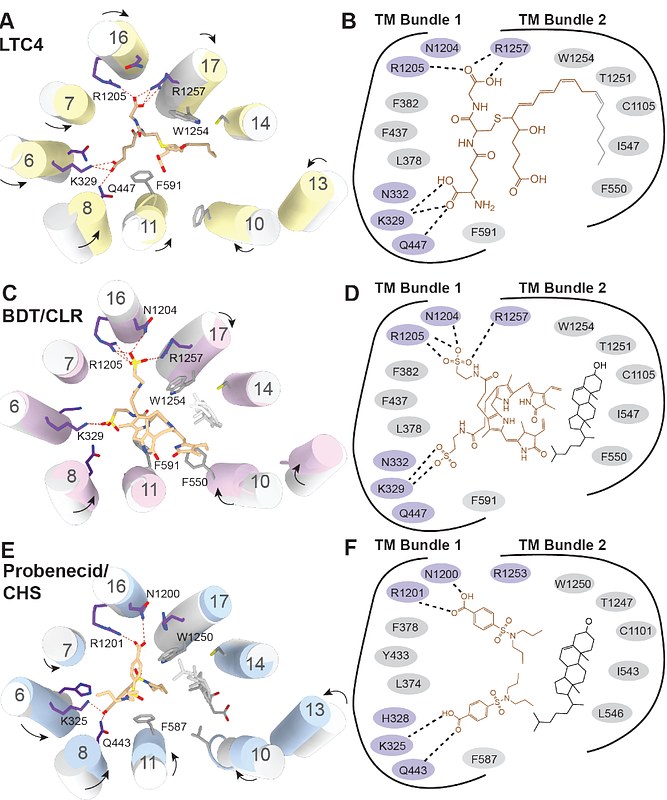Structural basis for the transport and regulation mechanism of the Multidrug resistance-associated protein 2

Structural basis for the transport and regulation mechanism of the Multidrug resistance-associated protein 2
Koide, E.; Pietz, H. L.; Beltran, J.; Chen, J.
AbstractMultidrug resistance-associated protein 2 (MRP2) is an ATP-powered exporter important for maintaining liver homeostasis and a potential contributor to chemotherapeutic resistance. Deficiencies in MRP2 function are associated with Dubin-Johnson Syndrome and increased vulnerability to liver injury from cytotoxic drugs. Using cryogenic electron microscopy (cryo-EM), we determined the structures of human MRP2 in three conformational states: an autoinhibited state, a substrate-bound pre-translocation state, and an ATP-bound post-translocation state. These structures show that MRP2 functions through the classic alternating access model, driven by ATP binding and hydrolysis. Its cytosolic regulatory (R) domain serves as a selectivity gauge, wherein only sufficiently high concentrations of substrates can effectively compete with and disengage the R domain to initiate transport. Comparative structural analyses of MRP2 in complex with different substrates reveal how the transporter recognizes a diverse array of compounds, highlighting the transporter\'s role in multidrug resistance.


